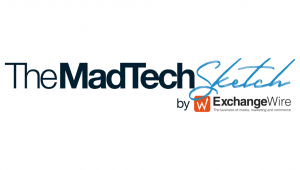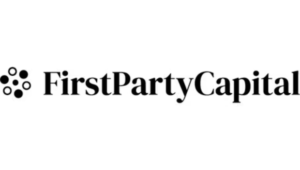"AI-Driven SPO is Reshaping Programmatic Efficiency": Interview with Amir Sharer, CEO of BRAVE
by on 3rd Mar 2025 in News

We sat down with Amir Sharer, CEO, BRAVE to discuss the evolving role of AI-driven supply-path optimisation (SPO) in programmatic advertising. He shares insights on how AI enhances bid efficiency, transparency, and ROI, while also addressing challenges like bid duplication, fragmented CTV supply chains, and MFA site proliferation.
Programmatic advertising is growing rapidly, but inefficiencies remain. What are the biggest challenges facing advertisers today?
The biggest challenge today is wasted ad spend—from bid duplication to unnecessary intermediaries inflating costs. SPO was originally designed to help advertisers cut through supply chain inefficiencies, but traditional SPO relied on eliminating intermediaries rather than optimising bid paths in real-time.
AI takes SPO further by identifying redundant bid requests and ensuring advertisers only bid on unique, high-quality inventory. It continuously analyses bid streams, filtering out low-value inventory before a bid is even placed. This isn’t just about cutting costs—it’s about directing budgets toward more effective placements, improving performance, and reducing reliance on opaque supply chains.
How does AI enhance traditional SPO?

Traditional SPO reduced intermediaries but lacked real intelligence in bid selection. AI takes SPO further by optimising bid streams, dynamically curating inventory, and filtering auctions in real time.
AI detects and blocks redundant bids, ensuring advertisers don’t waste budget bidding on the same impression multiple times. AI also prioritises high-quality inventory, analysing millions of bid requests to avoid inflated auctions. Additionally, AI-driven curation filters MFA sites, fraud, and low-engagement placements, ensuring that ads are delivered in brand-safe, high-impact environments.
Most SPO solutions reactively filter redundant bids, but BRAVE’s AI takes a proactive, predictive approach. By analysing historical auction data, ad engagement patterns, and first-party data signals, it optimises supply paths before a bid is placed, ensuring advertisers only compete for high-quality, high-performing inventory.
Unlike traditional SPO, BRAVE’s AI anticipates demand shifts in real time, dynamically adjusting bid strategies based on auction competitiveness and inventory quality. If AI detects surging high-value CTV inventory, it reallocates spend to maximise impact while avoiding low-performing placements before an auction even occurs.
What kind of results are advertisers seeing with AI-powered SPO?
Advertisers leveraging AI-powered supply path optimisation (SPO) are seeing measurable efficiency gains, higher win rates, and improved return on ad spend (ROAS). By eliminating bid duplication and prioritising premium, brand-safe inventory, AI-driven SPO ensures that every ad dollar is directed toward high-quality, viewable impressions rather than wasted on redundant auctions or low-value placements.
For example, DSPs implementing AI-driven SPO have reported a 20-40% reduction in bid duplication, a major improvement that prevents wasted spend and optimises budget allocation. Our demand partners also report a significant boost in eCPM effectiveness, as AI filters out low-engagement inventory and prioritises premium placements that drive stronger campaign performance.
Another key benefit is the enhancement of first-party data match rates, which is becoming increasingly critical in a privacy-first advertising landscape. AI-powered SPO refines targeting strategies by optimising contextual signals and authenticated data sets, ensuring advertisers reach the right audiences more efficiently while maintaining compliance with evolving privacy regulations.
By combining real-time auction filtering with AI-driven curation, advertisers are not only maximising efficiency but also enhancing transparency, allowing them to make smarter, data-driven decisions that drive long-term programmatic success.
CTV is one of the fastest-growing programmatic channels, but it’s also fragmented. How can AI-driven SPO improve efficiency in CTV?
CTV presents a massive opportunity, but it’s also one of the most fragmented channels in programmatic. The supply chain is cluttered with multiple resellers, bid duplication, and non-transparent auction dynamics, making it difficult for advertisers to secure premium placements at optimal costs.
AI-driven SPO cuts through this complexity by detecting and eliminating redundant bids, ensuring advertisers are bidding on premium CTV inventory through the most efficient paths. It analyses cross-device behaviour, helping advertisers connect CTV exposure with mobile retargeting, improving engagement and conversion rates.
For instance, 74% of CTV viewers engage with second-screen devices while watching live sports. AI-driven SPO allows brands to seamlessly retarget these viewers across devices, increasing post-ad engagement.
What’s next for AI in SPO? Where do you see the industry going?
By 2026, AI-first buying will redefine programmatic efficiency—moving beyond bid duplication reduction to predictive, self-optimising supply paths. Instead of reacting to auction inefficiencies, AI will anticipate demand shifts, adjust bids dynamically, and reshape how advertisers access premium inventory.
We’re entering a real-time, AI-driven marketplace, where supply paths will self-correct based on historical auction data, audience intent signals, and real-time engagement metrics. AI will dynamically route bids through the most cost-efficient, brand-safe, and high-performing pathways—before an auction even takes place.
For CTV and in-app, AI will eliminate redundant paths at the source, preventing advertisers from overpaying for duplicate impressions. In a cookieless world, AI will optimise against contextual signals, device graphs, and first-party data to improve match rates—enabling more precise, privacy-compliant audience targeting.
In short, SPO won’t just be about reducing waste—it will be about maximising predictability, precision, and performance at scale. Advertisers who adopt AI-first SPO strategies early will hold a significant advantage as supply paths become increasingly automated, intelligent, and ROI-focused.
What’s your advice for DSPs and advertisers looking to optimise their supply paths? Where should they start?
First, assess your current supply paths. Identify where inefficiencies exist, including redundant auctions, excessive fees, and non-transparent supply chains. Many advertisers unknowingly waste budget on non-viewable, MFA, or fraudulent inventory.
Next, adopt AI-powered SPO solutions. AI continuously optimises bid streams, prioritises premium inventory, and eliminates bid duplication before a bid is even placed. This is where programmatic efficiency shifts from just reducing costs to actively driving better performance.
Finally, align your first-party data strategy using external ID solutions. As cookies phase out, integrating contextual and authenticated audience data will be key to reaching high-intent users efficiently.
The takeaway? Transparency, AI-driven efficiency, and first-party data alignment will define the next evolution of programmatic success. Advertisers who optimise their supply paths today will outperform their competition tomorrow.
Final thoughts
AI-driven SPO is reshaping programmatic efficiency, allowing advertisers to eliminate waste, improve transparency, and maximise campaign performance. As AI-first buying becomes the new standard, programmatic success will belong to those who invest in smarter, data-driven supply path strategies.
AIProgrammaticSupply SideTransparency








Follow ExchangeWire